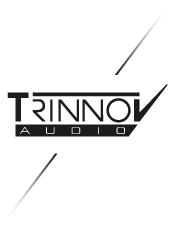Steve Kaplan (Score Mixer)
(God of War, Star Wars: Battlefront II, The Walking Dead)
26 July 2018
Case Studies
| Videos

This last April we met in Santa-Monica with score mixer Steve Kaplan (God of War, Star Wars: Battlefront II, The Walking Dead) to discuss his workflow and the way the Trinnov ST2 has changed it for the better.
He told us first hand: The Trinnov was kind of the solution I wasn’t expecting at all, and I really enjoy working with it now, more than I ever thought!
WITH YOUR WORK ON FILM OR VIDEO GAMES, YOU OFTEN WORK ON MATERIAL THAT INVOLVES MULTIPLE SOURCES WHICH ARE WAY DIFFERENT IN TERMS OF QUALITY AND TIMBRE, HOW DOES THAT AFFECT YOUR WORK?
With pop music, it’s easier right because the frequency response is a bit different and a little less dense but with scoring that uses hybrid elements you have just so many instruments going on and it takes so long to figure out what to do. With the Trinnov in my studio, I’m able to hear more accurately without having to check multiple sources and make quicker decisions, I also like that you can tweak stuff so if I’m working on different kinds of music I can change the settings depending on genres.
IN THAT SENSE DO YOU MAKE STRONG USE OF THE TARGET CURVES AS WELL?
Sometimes if you’re mixing something pop you want to be able to turn it down and be able to bump the high end a bit so that you feel like it’s right and then take it off later, it’s cool because you can do as much or as little as you want with it, and you can really strip stuff back if you only need a little, here, for example, I’m only doing under 250, and I’m I don’t have the delays on, I just have some filters on, and it really seems to help.
HOW USEFUL ARE THE BASS MANAGEMENT FEATURES IN THE OPTIMIZER FOR YOU?
I didn’t even realize until I started getting deeper into it that there’s a lot of bass management stuff and so depending on what happens if you go to a different room or say had to mix in a different place for a while I would definitely take it and then be able to tweak it for whatever monitoring situation I needed, it really stabilized the low-frequency image, classic tracks I know as a reference just felt better in that bottom region.
DO YOU MAKE USE OF THE DELAYS AS WELL?
For me, it’s amazing that you can delay just the backs and not the front. As I’ve kept it longer I felt like this is obviously the way to go and I don’t think there’s another product out there right now that offers that that level of simplicity but yet also allows you to do what you want and not let it drive you to do what it wants.
A LOT OF OUR LONG-TIME USERS TELLS US ABOUT LISTENING AT LOWER VOLUME SINCE THEY ARE USING THE OPTIMIZER, DO YOU FEEL THE SAME?
I mean If you don’t have your monitoring set up really well then you’re just listening too loud for a long period of time, and I was definitely trying to find a way to not listen as loud especially with the low end, with the Trinnov in the monitoring chain I can finally turn that volume down!
ALONG THOSE LINES WE OFTEN HEAR THAT THOSE ENGINEERS SPEND LESS TIME IN THE STUDIO FOR THE SAME RESULTS, IS THIS SOMETHING YOU’VE EXPERIENCED?
Overall, I think the most important thing is that my Trinnov saves me a lot of time especially when you can’t control the length of your workdays, it lets you listen at a much lower volume and with those two things put together you get a lot more work done, and you can save your ears from becoming fried over the day, I think this is so important because you get to go home a bit earlier and your ears aren’t just burned off your head!

